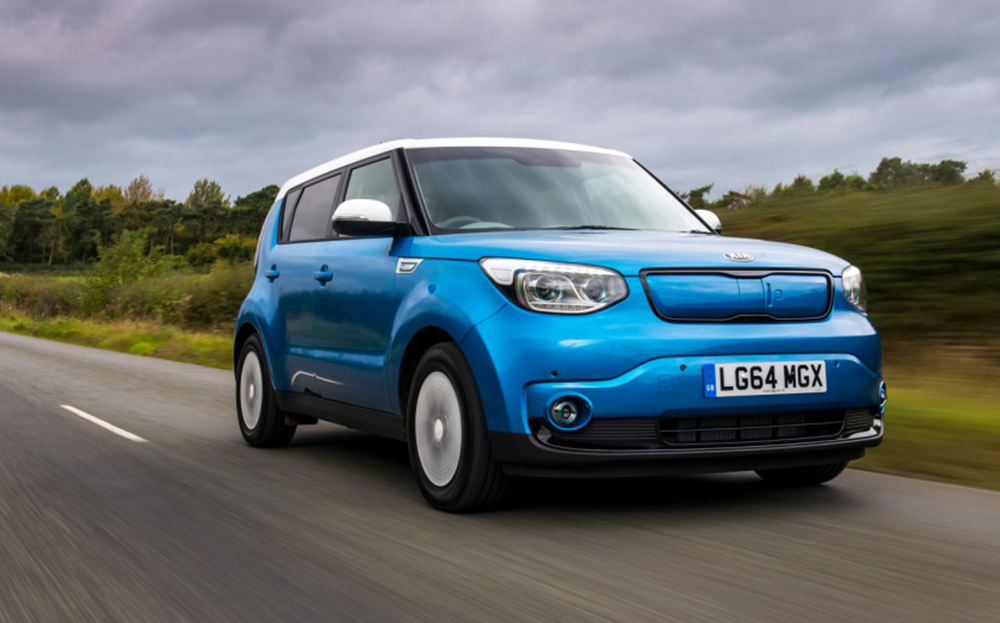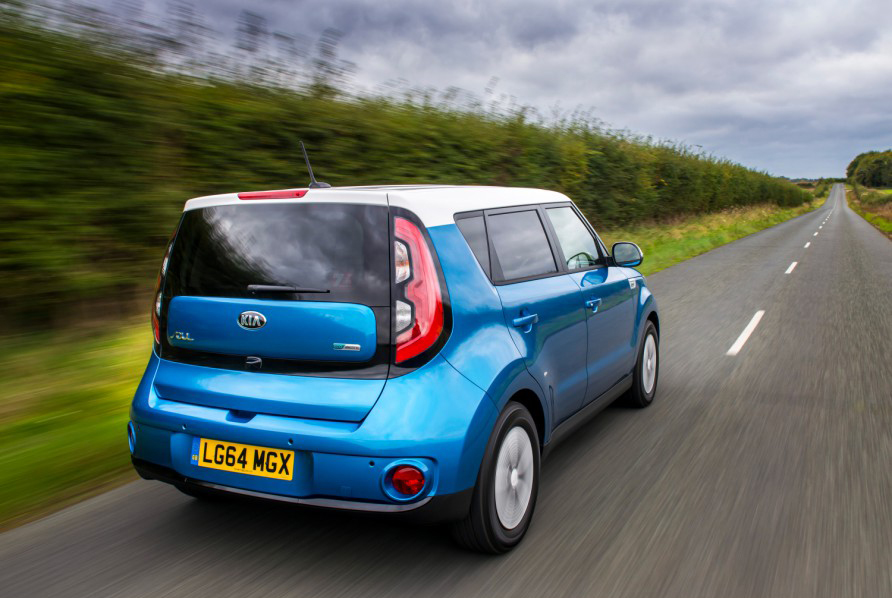First Drive review: Kia Soul EV (2015)
Assault and battery on your wallet
SO I’M in the new all-electric version of the Kia Soul, rolling slowly but amiably through London’s tricky mid-morning traffic — passing the poppy memorial at the Tower, in fact, not that you can see anything of it from the road. Which is just as well, clearly, otherwise my bracingly future-oriented Soul and the other backward, air-clogging vehicles around it would soon be distractedly piling into one another, holding up the traffic even more.
In any case, I’m already distracted enough because my mind keeps flashing back to another all-electric car, at another time, in another part of London.
So even as I’m enjoying this squat Korean supermini’s easeful quiet, the plushness of its fully biodegradable upholstery and the whispered instructions of its sat nav, in my mind it’s 2008 and I’m coming off a crowded Wandsworth roundabout in a second-generation G-Wiz, that hopelessly frail plastic jalopy, and heading south in extreme, buttock-savaging discomfort up a three-lane incline, wide-eyed with panic and intimations of an early death, stamping meaninglessly on the accelerator, puttering upwards at a miserable 11mph as conventionally powered cars storm past, honking their derision.
I may have imagined the honking. But I’m not inventing the flashbacks. Taking a lot of lysergic acid and experiencing a G-Wiz at first hand appear to have that much in common.
Was that really less than a decade ago, though? How far the battery-powered dream has come — all the way to this comfortable, sturdy and even commanding Soul variant, with its DAB radio, its miniaturised-SUV stylings, its 8in touchscreen, its plethora of airbags (six of them).
Who would even know, from a brief glance, that you were using a battery only? Pretty much all that separates the electric Soul from its combustion-engined stablemates, when you look at them from the outside, are some remodelled brake lights and a blank plate where the grille would have been that hides the two charging sockets.
The adoption of a convincing disguise, surely, was always going to be what gave the electric car project traction and started to bring some people on board. The problem with early electric cars was that they looked like early electric cars — fashioned for the future, not entirely of this world and, at their worst, plain batty. This was always going to present a problem, in terms of mass take-up, it being widely understood that humankind’s touching willingness to espouse the pioneering is ultimately overwhelmed by humankind’s firm determination not to look a fool.
So, with the cosmetic problem overcome, the next hurdle is range anxiety — the fear your battery will run out at the wrong moment, which is annoying enough when it’s your phone but would be even more so when it’s a car full of kids.
Yet the existence of range anxiety is somewhat paradoxical, given the existence of the national electricity network. The truth is, in a city you are rarely more than a few feet from an electrical socket and almost always closer to an electricity supply than you are to a petrol station. The question is whether, in an emergency, you could persuade the owner of that nearby socket to let you use it — and, indeed, whether it is acceptable to ring a stranger’s doorbell and ask if you can have a quick squirt of their electricity to get you home. Clearly there are whole new areas of etiquette surrounding electric transport that we are only just beginning to grapple with.
Anyway, the declared range of the Soul is 132 miles. Even if we decide to knock 40 off to allow for real driving conditions, the car should easily have your daily needs in a city covered. By clever selection of your driving mode you can also recuperate energy from your braking. In some particularly stodgy traffic around Greenwich we earned a couple of extra miles this way and felt smug about it.
This alchemy could go some way towards mitigating the maddening tedium of the city traffic jam. Yes, you’re losing irreplaceable time, feeling murderously ill-disposed towards your fellow road users and close to biting off your own fingers in frustration. But when you brake you’re gaining a little bit of battery charge, so there’s a positive.
In untrammelled Drive mode, the Soul EV’s acceleration was plucky and seamless. The steering was featherweight and the overall experience traded zip and gusto for drift and glide. But drift and glide can be alluring — and restful, especially in thick traffic.
Packing the battery under the floor has taken 3in off the standard Soul’s legroom for the three passengers in the back, but if you don’t mention that to your kids, they probably won’t notice. Inserting a drawer for the necessary cables squeezes the boot capacity down by 31 litres to 281 litres — but that’s still a decent space.
However, even after the government’s £5,000 electric vehicle grant, the price looks steep — especially when you consider that you can get a petrol Soul for £12,600. Here’s the one key area where the revolution has yet to hit. An electric Soul will necessarily be a minority interest — and, indeed, Kia says it imagines it will sell at most 200 of these over the next year. But the minority is expanding and the reasons not to be a part of it continue to fall away.
Verdict ★★★★☆
Apart from the price, watt’s not to like?
2015 Kia Soul EV specifications
- Price: from £24,995 (after £5,000 government grant)
- Motor: 81.4kW AC (109bhp)
- Battery: 27kWh (13 hours to charge at 230V)
- Transmission: Single-speed, front-wheel drive
- Acceleration: 0-60mph in 10.8sec
- Top speed: 90mph
- Range: 132 miles
- Road tax: A (free)
- Release date:January
The rivals
Nissan Leaf Acenta, £23,590 (after government grant)
For Cheap to charge; decent to drive; spacious and comfortable interior
Against Interior feels cheap; ugly
Browse the used Nissan Leafs at driving.co.uk
Vauxhall Ampera, £28,750 (after government grant)
For ‘Limp home’ engine eliminates range anxiety
Against Less green; small boot; pricy
Browse the used Vauxhall Amperas at driving.co.uk






